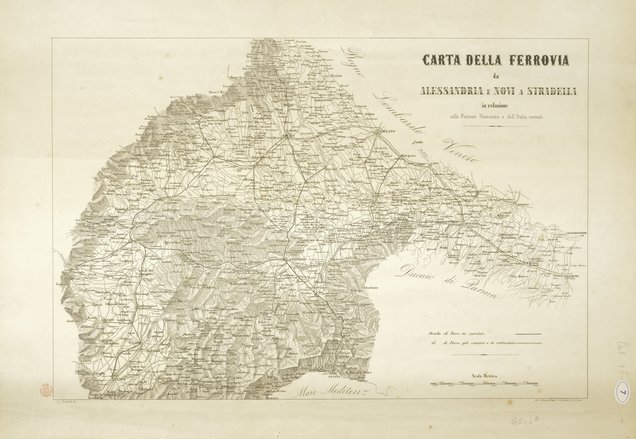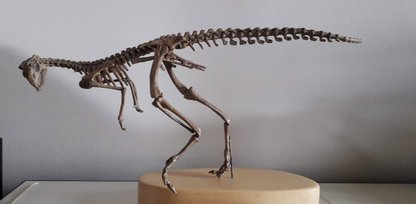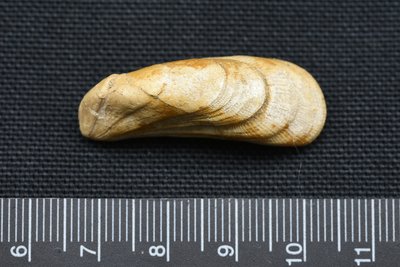Paleontologia
Paleontologia
La linea ferroviaria Torino-Genova
Siamo a metà del XIX secolo. Camillo Benso conte di Cavour, politico e imprenditore protagonista del Risorgimento italiano, credeva nel progresso economico e civile che l’avvento della ferrovia avrebbe portato. Sotto la sua guida, il Governo sabaudo finanziò la costruzione del tratto Torino–Genova.

La grande sorpresa: un rinoceronte sulle colline!
Nella primavera del 1880, durante gli scavi nell’area di Dusino San Michele, nel segmento tra San Paolo Solbrito e Villafranca d’Asti, dai sedimenti sabbiosi di una collina affiorarono i resti fossili, quasi completi e in eccellente stato di conservazione, di un…rinoceronte!
L’ispettore degli scavi di antichità del Circondario di Asti informò immediatamente Michele Lessona, Rettore della Regia Università di Torino.

Tre milioni di anni!
I ricercatori dell'Istituto di Geologia di Torino, accorsi sul posto, si trovarono di fronte l'imponente scheletro di un rinoceronte bicorne, che all'incirca tre milioni di anni prima abitava quella terra, da poco emersa dalle acque calde (il clima era subtropicale) del Golfo Pliocenico Padano.
Le testimonianze fossili provano che quel mare era popolato di squali e cetacei, mentre la fauna terrestre includeva proboscidati (Anancus arvernensis e Mammut borsoni), tigri dai denti a sciabola (Homotherium crenatidens), ghepardi (Acinonyx pardinensis), rinoceronti (Stephanorhinus jeanvireti), bovidi (Leptobos), tapiri, scimmie e alcune specie di anfibi.
Nelle paludi alluvionali e deltizie dominavano le conifere Taxodium dubium e Glyptostrobus europaeus, affini agli attuali Taxodium distichum dell'America centro-settentrionale e ai Glyptostrobus pensilis della Cina, mentre nelle zone con minore ristagno di acqua proliferavano piante simili agli attuali aceri, carpini, noccioli e querce, alle Actinidia e Cryptomeria dell'Asia e al Liriodendron e Liquidambar del continente americano.
Già le campagne di scavo iniziate nella seconda metà del Settecento avevano portato a ritrovamenti di macrovertebrati, tra cui l'Anancus arvernensis, un mastodonte dalle zanne lunghissime e poco incurvate, di tre metri di altezza al garrese e sei di lunghezza. Di questa specie, in anni recenti, sono stati rinvenuti molari e zanne.

Il Villafranchiano
L'importanza e la quantità di rinvenimenti fossili sia animali sia vegetali fecero emergere la specificità geologica di Villafranca d'Asti e delle zone limitrofe.
Il termine Villafranchiano è usato ancora oggi dagli studiosi di tutto il mondo per riferirsi a sequenze stratigrafiche caratterizzate dalla presenza, o dal succedersi, di un insieme di specie che fanno la loro prima o ultima comparsa in quell'intervallo di tempo.
A proposito degli scavi
La nota-spese degli scavi indica:
- l’arco temporale in cui questi vennero eseguiti (21 aprile – 28 maggio 1880);
- gli importi sborsati per: compensi per i cavatori di sabbia; acquisto di colla di pesce e di gesso per il consolidamento e l'incamiciatura dei resti danneggiati; approvvigionamento dei materiali per l'imballaggio, in vista del trasporto a Torino via ferrovia.
Tutte le fasi degli scavi furono riportate minuziosamente da Martino Baretti, titolare della cattedra di Geologia e Direttore del Museo di Geologia e Paleontologia dell'Università di Torino, in due comunicazioni all'Accademia delle Scienze.
La seconda relazione, con annesso un disegno, tratto da una fotografia eseguita in loco, documenta il ritrovamento dell'arto posteriore destro con le ossa ancora in connessione anatomica.

Il primo restauro
Il restauro fu eseguito da Francesco Comba, tecnico del Museo di Zoologia di Torino.
Il trattamento consisteva nell'impregnazione dei reperti con colle di origine animale che, utilizzate a caldo, avevano la funzione di incollaggio dei frammenti.
A quindici mesi dal ritrovamento, l'esemplare restaurato fu presentato all'esposizione di Geologia e Paleontologia di Bologna, in concomitanza con il 2° Congresso Geologico internazionale.
Nel 1895 il geologo e paleontologo Federico Sacco dedicò una monografia alla descrizione osteologica e alla definizione tassonomica di questo straordinario reperto, che ritenne appartenesse a una nuova varietà (var. astensis) di Rhinoceros etruscus.

I danni della guerra
A causa dei bombardamenti su Torino del 1942 e 1943, che danneggiarono il Museo di Geologia e Paleontologia, lo scheletro fu smontato e i pezzi collocati in casse e vetrine, ma infiltrazioni di acqua, cadute di frammenti dai lucernari e la stessa movimentazione dei reperti li deteriorarono in maniera ritenuta irreparabile.
All'inizio degli anni Ottanta si eseguì la rimozione dello strato di colla in cui, per effetto dell'umidità, si erano incorporate particelle di intonaco e polvere, cui fecero seguito riconoscimento e ricomposizione degli elementi osteologici.
Fatta eccezione per alcune coste e piccole porzioni del cranio e del bacino, lo scheletro fu ricostruito. Recenti studi hanno attribuito l'esemplare alla specie Stephanorhinus jeanvireti.

Da "Rhinoceros" a "Lo spettacolo della natura"
L'occasione per parlare nuovamente del Rinoceronte di Dusino la offrì, nel 2004, "Rhinoceros", mostra realizzata dal MRSN nella quale fu esposta la copia in resina realizzata da Paolo Reggiani. La stessa copia è stata inserita, nel 2013, nell'allestimento permanente "Lo spettacolo della natura".
E adesso?
Con la riapertura del MRSN, si può di nuovo ammirare il modello dello straordinario “rinoceronte del Piemonte”
INFORMAZIONI
Quante cose si possono imparare sul mondo naturale? Scoprilo al Museo Regionale di Scienze Naturali!





















